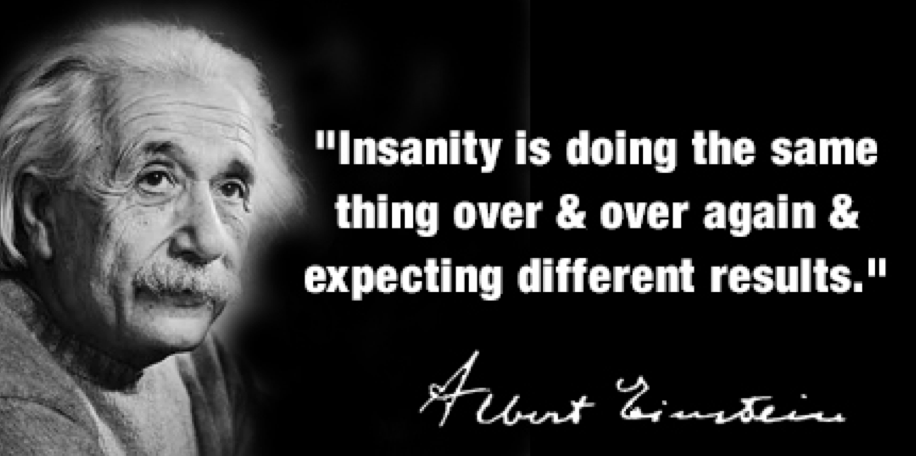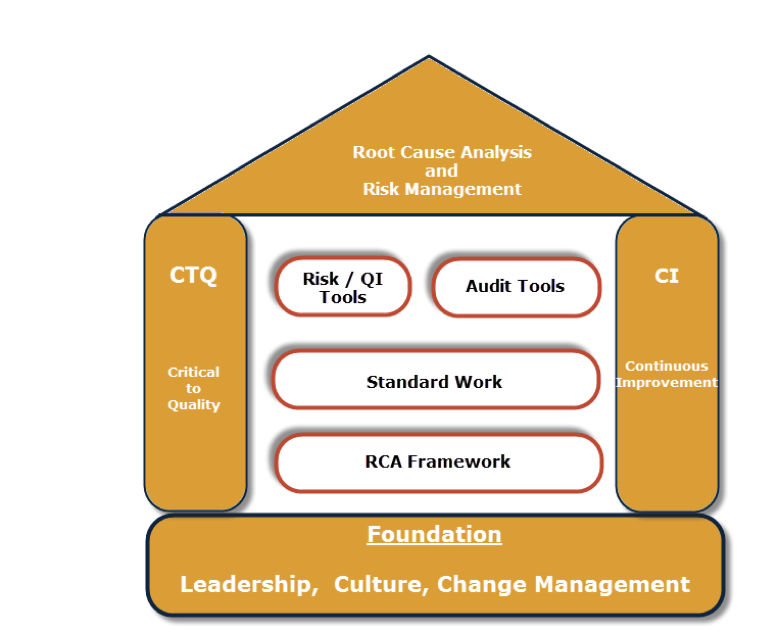 Albert Einstein once said that … “Insanity is doing the same thing over and over again and expecting different results.” If you find yourself doing a root cause analysis on the same problem again and again, it may be a time to revisit the root cause analysis from a framework point of view rather than a tool. In this article, I will go over an example of root cause analysis as a risk management framework rather than one of the tools or a process that you use for troubleshooting a problem.
Albert Einstein once said that … “Insanity is doing the same thing over and over again and expecting different results.” If you find yourself doing a root cause analysis on the same problem again and again, it may be a time to revisit the root cause analysis from a framework point of view rather than a tool. In this article, I will go over an example of root cause analysis as a risk management framework rather than one of the tools or a process that you use for troubleshooting a problem.
There are several root cause analysis frameworks which you may come across. In my research, the top five root cause analysis framework related to healthcare are from: the Canadian Patient Safety Institute (CPSI), the Institute for Healthcare Improvement (IHI), the National Health Service (NHS), the Joint Commission and the World Health Organization (WHO).
Each of these frameworks has a many common and overlapping concepts. In my opinion one can leverage the benefits of this framework when it’s adapted to the concept of root cause analysis house. As shown below the RCA / Risk Management house will have a foundation that consists of Leadership, Organizational culture and Change management processes. Two pillars on top of the foundation are made of Critical to Quality concepts and Continuous Improvement philosophy. The roof would house effective RCA and risk management. Inside the house, we will have RCA framework – describing a particular methodology and philosophy around how to conduct an RCA, Standard work – detailed outline of roles, responsibilities and process steps on how to conduct an RCA, Risk /QI tools – to help assisting the RCA process and Audit tools – to track the outcome of the RCA.
To really understand what a root cause is, I would like you to think of a problem that you are encountering. Take a few seconds to think about it. Write down your thoughts on a sheet of a paper. When I ask this question during training sessions, I have noticed that most of the responses are related to a visual problem or symptom. Do you find that the problem you wrote down is a symptom or a visual in nature? (e.g. Not being able to sleep, staff not complying with policies etc.).
Now think of a solution for your problem. Again, write it down. If your solution is addressing the symptom or visual aspect of the problem, chances are that you haven’t really found a root cause. Usually there is a series of level of causes behind a problem. You need to get to the bottom of the higher level causes to discover the root cause or causes.
RCA are typically done for quality, safety, risk or on a situation requiring solution. Purpose of an RCA is to find out what happened, why it happened and determine what changes need to be made. RCA is a team sport, and to conduct an RCA, the first step in the process is to gather a team! Most RCA team has a facilitator who plays the lead role in navigating the RCA analysis process. The role of a facilitator can be played by a quality improvement champion or risk management professional. The team would also need a coordinator, who can help champion the process of creating an incident timeline.
Timeline is a sequence of events that captures the nuances of the process as it occurred on a given day of the incident. Following the creation of the time, the next step is for the team to meet and conduct the RCA itself. This is done through gap analysis, sharing of evidence, understanding of gaps that may have contributed to the outcome, as well as creation of causal statements and recommendations towards the end of the analysis. Task/Action assignment and audit plan often marks the end of the facilitation sessions. Subsequent to the RCA meeting, learnings from the RCA should be made broadly available for the learnings.
All RCAs have one thing in common! They all required gathering data. One way of gathering data is to interview staff personnel involved in the incident. When interviewing, it is crucial for the interviewer to ask an open ended questions. Closed ended questions which could have Yes/No possibility should be reserved for in-person meeting. A good interview usually leads to better understanding of the problem and timeline. Timelines typically consists of date /time, description of facts and source of information. Make sure that you capture and retain all interview information, even the ones which may not be a direct part of timeline but are providing you with a valuable insights in organizational culture and contributing factors. In the next article we will explore how to use some the RCA tools to unpack the timeline and discover root causes.
What is your story?
I am very keen and interested in hearing your feedback and experiences in conducting a root cause analysis. Please share your learning, challenges and insights.
Sources
http://www.patientsafetyinstitute.ca/en/toolsResources/IncidentAnalysis/Documents/Canadian%20Incident%20Analysis%20Framework.PDF
http://www.who.int/patientsafety/activities/technical/Vincristine_Learning_from_error.pdf
http://www.nrls.npsa.nhs.uk/resources/collections/root-cause-analysis/
Bio:
Jignesh is a consultant specialized in managing change involving Lean, Quality Improvement and Healthcare information technology. He has worked for Fortune 500 organizations, public sector as well as led start-ups in healthcare and biotech sector. Jignesh has developed a reputation as a dynamic, innovative, and motivational leader with over 10 years of experience as a champion of quality, safety and risk in diverse organizations. His ability to ask the right questions, and think creatively & strategically gives those he works with a “competitive advantage” in developing winning strategies for their future and the future of their organizations.
Contact: Jignesh.padia@gmail.com
Website: www.ermgovernance.com

